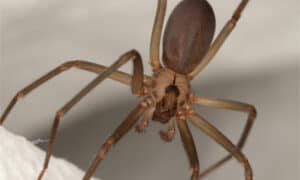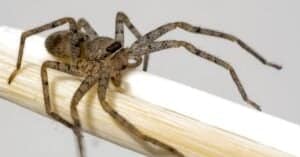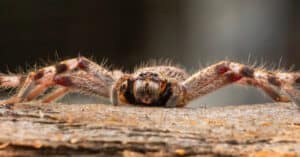People love Washington State for its rainy weather, mountain ranges, and cityscapes. This state’s diversity in landscapes is only matched by the animals that roam the area. One thing is for sure, though. Whether you are trotting through downtown Seattle or taking part in a tour of Forks, you’ll find spiders. That includes some rather large species. Today, we’re going to examine five of the biggest spiders in Washington and show you just how big they can get.
What Are the Biggest Spiders in Washington?
With so much uninhabited land in the state, many of the biggest spiders in Washington can thrive without interactions with humans. Still, when humans do see some of the largest spiders, they think they’re in danger.
That’s why we’re going to look at a handful of the largest species in the state and show you what they look like, how big they get, and if they’re a danger to you.
5. Trapdoor Spider
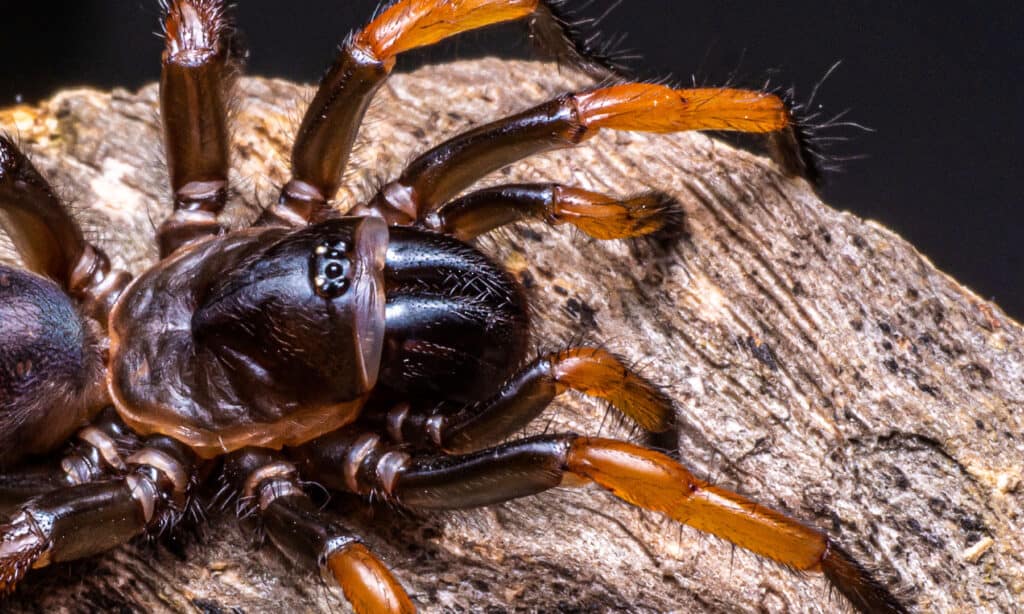
Trapdoor spiders live in burrows.
©nokkaew/Shutterstock.com
| Scientific Name | Size | Danger to Humans |
|---|---|---|
| Ummidia Genus | 1-2 inches | Delivers a mildly painful bite. |
The chances of you being bitten by the trapdoor spider are very minimal. These spiders spend a large portion of their lives living below ground level in a burrow they use to catch and eat prey. As their name suggests, the web-lined burrow has a hinged trapdoor that opens into the world.
They wait by this door for prey to wander past and then they throw it open, grab the critter, and retreat inside. To get bitten, you would probably have to root around in the spider’s home. Even then, they can only cause a mildly painful bite.
Although they may look similar to a tarantula with their shiny black or brown carapaces and legs, trapdoor spiders only measure about 2 inches long. Most of that is their body length, though. They don’t have very long legs.
4. Long-Bodied Cellar Spider
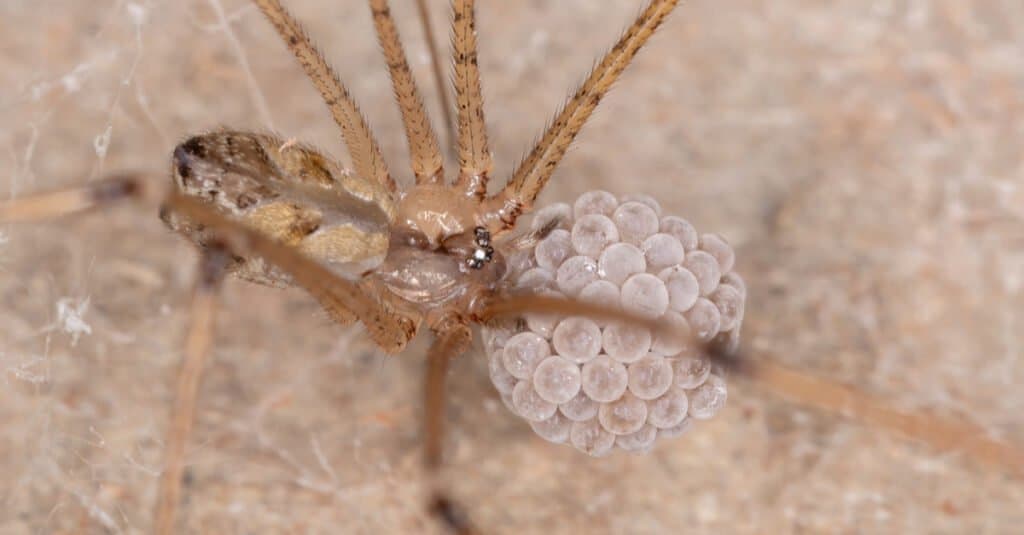
Cellar spiders have translucent bodies.
©iStock.com/ViniSouza128
| Scientific Name | Size | Danger to Humans |
|---|---|---|
| Pholcus phalangioides | 1-2 inches | A bite may cause a mild burning sensation. |
The long-bodied cellar spider is frequently seen in basements, garages, and other dark, out-of-the-way places where it will be left alone. This spider is typically brown, tan, or grayish brown, and it possesses a somewhat translucent body with thin legs.
Cellar spiders exhibit a few behaviors that frighten people. For example, their long legs relative to their small, peanut-shaped body makes for an awkward, creepy gait. Moreover, if they sense a threat, they will try to vibrate or spin their web to make it harder to spot them.
While they might look scary, they can’t do any lasting harm to people no matter what urban legends tell you. The most you’ll get from this spider is a small bite that burns slightly.
3. Hobo Spider
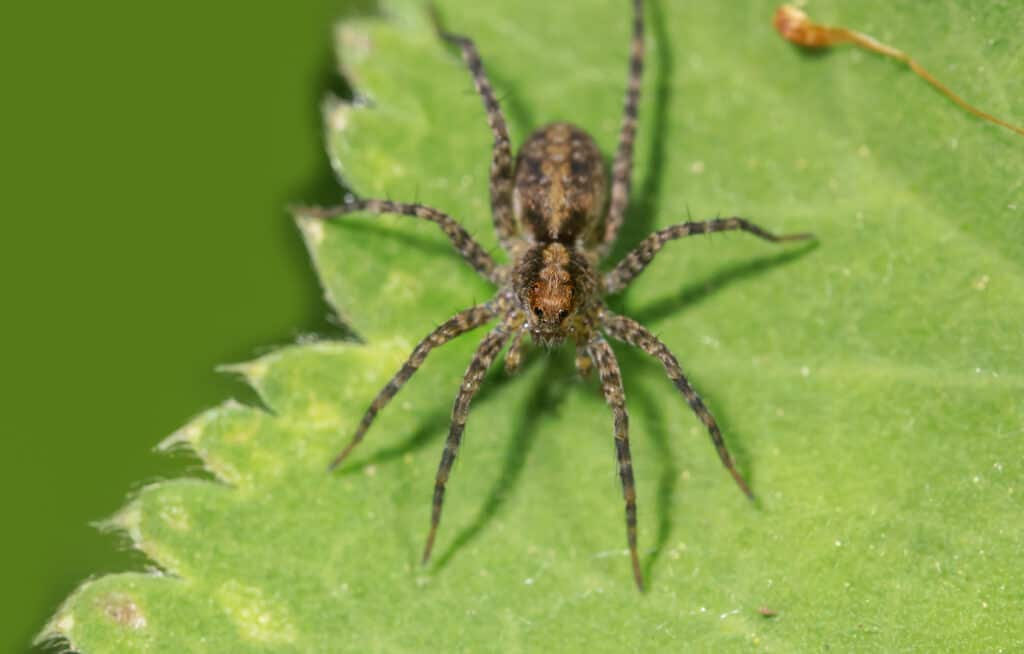
Hobo spiders are often confused for brown recluses.
©SNEHIT PHOTO/Shutterstock.com
| Scientific Name | Size | Danger to Humans |
|---|---|---|
| Eratigena agrestis | 1-2 inches | A bite can cause moderate pain and some redness at the site, but they’re not deadly. |
Many people alive today grew up with the mistaken belief that the hobo spider was very harmful to humans. Scientists once believed that the spider could deliver a necrotizing bite that would result in complex wounds and potential infections. Modern research has dispelled that hypothesis and shown that hobo spider bites aren’t that serious.
Nevertheless, misinformation and fear continue to surround this species. Not helping matters is that the spider is about 2 inches long, including its legspan, and has a brown body.
Although hobo spiders have brownish-yellow markings on their abdomen and a more defined cephalothorax and abdomen, some people confuse the hobo spider with the brown recluse, a harmful spider that is not native to this state. You can easily see the differences between the two if you put them side by side, though.
Hobo spiders like to live in dark areas where they can make their webs across gaps and cracks. You’ll find them in gardens, window wells, basements, woodpiles, and home foundations. If one does manage to bite you, then you’ll feel some moderate pain and experience redness and perhaps a little swelling at the site.
2. Ground Wolf Spider
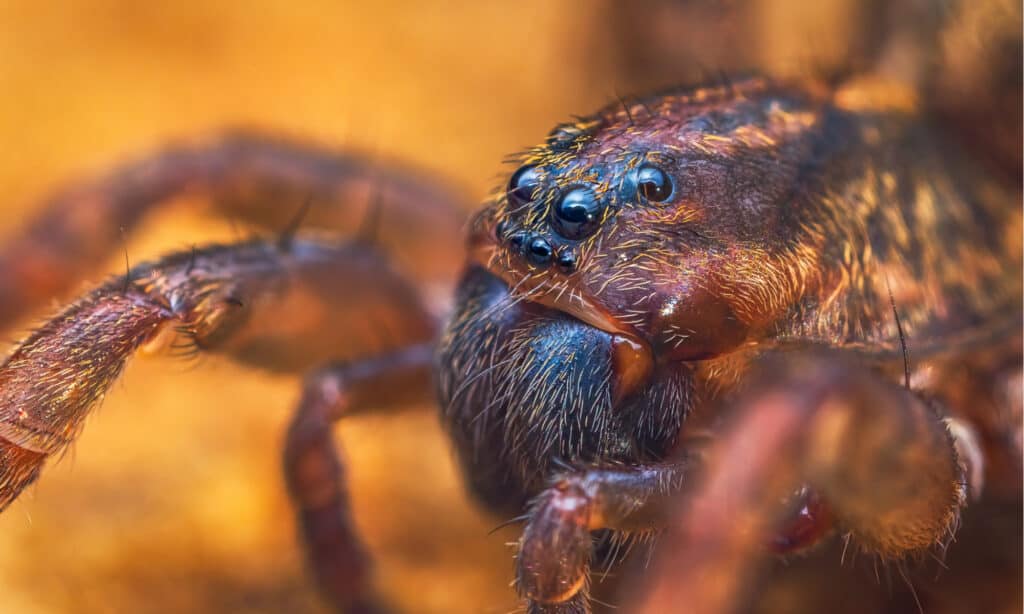
The ground
wolf spider
hunts at night.
©Lukas Jonaitis/Shutterstock.com
| Scientific Name | Size | Danger to Humans |
|---|---|---|
| Trochosa terricola | 2-3 inches | Delivers a mildly painful bite that leaves a bump. |
Ground wolf spiders are some of the biggest spiders in Washington State, possessing a 3-inch legspan and a body that measures over an inch. These spiders have the usual light brown midband on the cephalothorax along with two dark spots and a dark cardiac mark on the abdomen. The rest of the abdomen is light and dark patterned.
These spiders usually hunt at night, so they’re not commonly encountered by people. They prefer to hide in moist and dark habitats where they can wait to ambush their prey.
That means you can turn over rocks and find these critters while also seeing them skulking around the boxes in your basement or lurking in the hollow part of a log. Wolf spider bites are mildly painful and typically leave a bump that can be red and itchy.
However, unless you’re allergic to their venom, the bite is not that serious. If you are allergic, then you may need medical attention for trouble breathing, dizziness, and muscle discomfort around the bite.
1. Giant House Spider
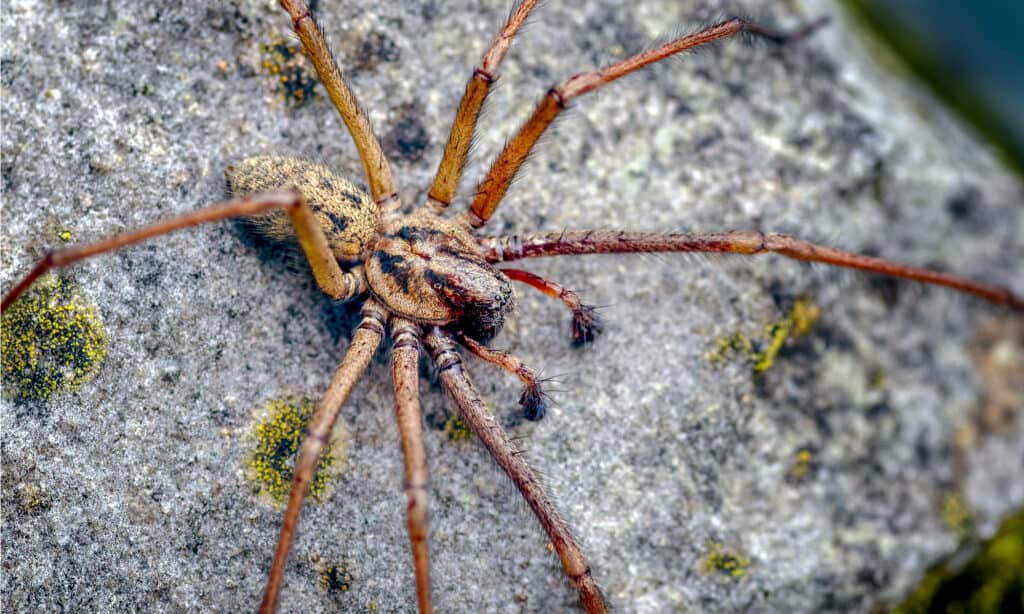
The giant house spider is the biggest spider in Washington.
©R K Hill/Shutterstock.com
| Scientific Name | Size | Danger to Humans |
|---|---|---|
| Eratigena atrica | 2-4 inches | A bite from this spider causes minor pain and swelling unless the individual is allergic. |
Giant house spiders are among the biggest spiders in Washington if not the largest outright. As their name suggests, they frequently end up inside of homes. They like to build webs in attics, basements, and other areas where they’re not going to be bothered.
These spiders are often seen out of a person’s peripheral vision as they scurry away at lightning speed. They are one of the fastest spiders, after all.
Typically, the giant house spider is black, brown, and tan with a light mid band surrounded by dark marks on the carapace and a patterned abdomen. Although these spiders are very big, they’re not very harmful to people. A bite from this spider will cause some pain and swelling in the vast majority of cases.
Having looked at the biggest spiders in Washington, let’s end our exploration of these spiders by turning our attention to the dangerous spiders in this state. The black widow can deliver a medically significant and even fatal bite to a human being.
The yellow sac spider can also bite human people and deliver a bite that may require medical attention. Learn to spot these spiders and check any area they touch on your body for hours afterward for symptoms like swelling, redness, or a lesion.
Up Next:
- 5 of the Biggest Spiders in Wyoming
- 5 of the Biggest Spiders in Nebraska
- 5 of the Biggest Spiders in Minnesota
The photo featured at the top of this post is © Lukas Jonaitis/Shutterstock.com
Sources
- Missouri Department of Conservation (1970) mdc.mo.gov/discover-nature/field-guide/cellar-spiders
- Utah State University (1970) extension.usu.edu/pests/uppdl/hobo-spiders
- (1970)
Thank you for reading! Have some feedback for us? Contact the AZ Animals editorial team.



